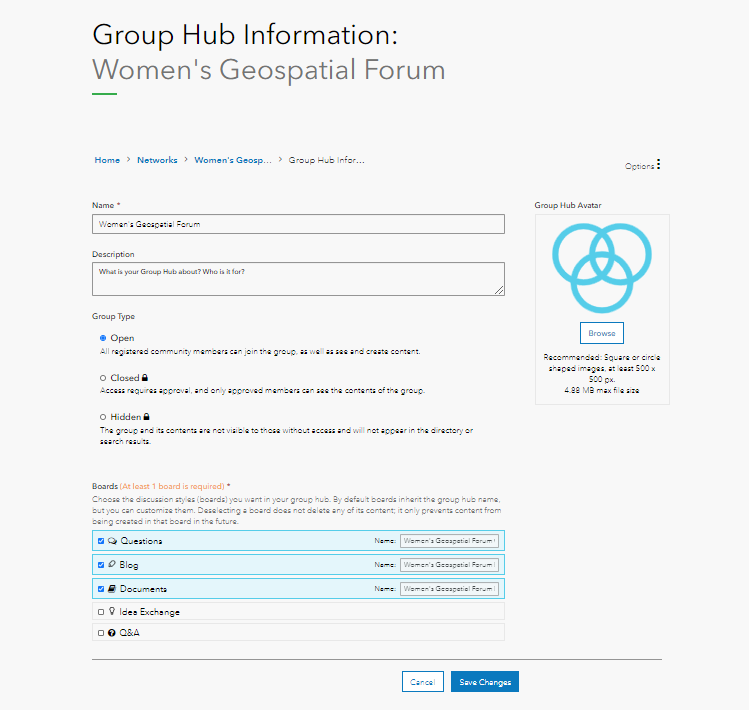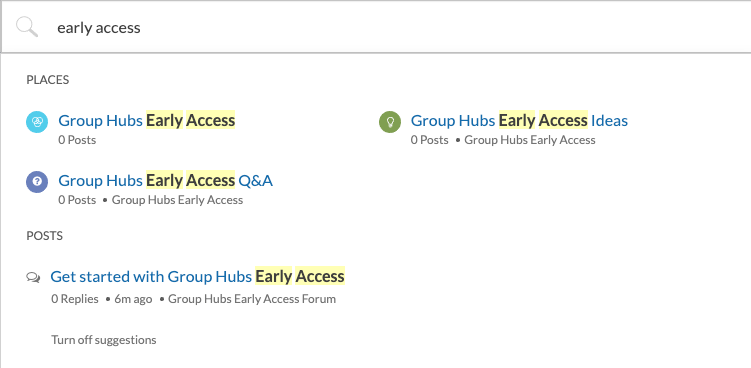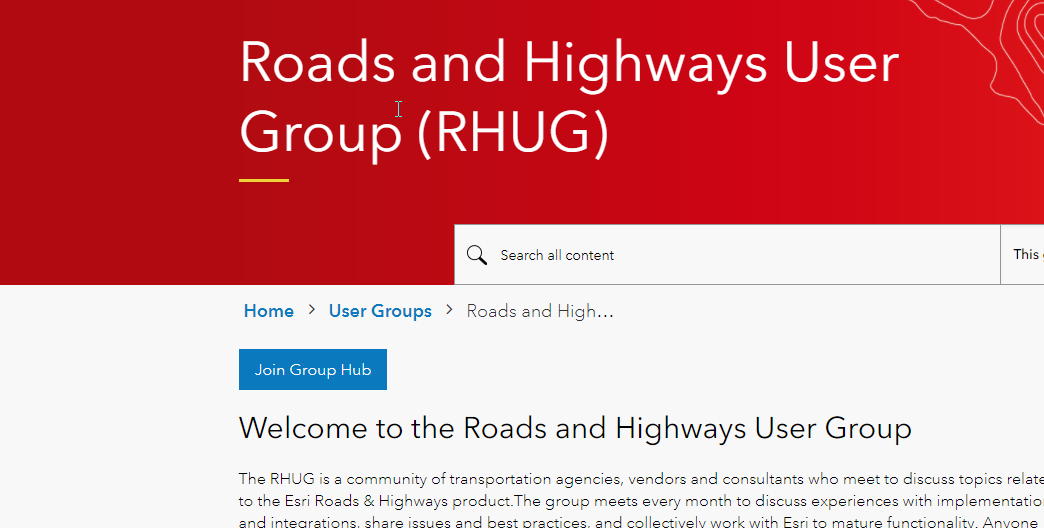- Home
- :
- Community Resources
- :
- Community Help Documents
- :
- Community Group Owners Guide
- Subscribe to RSS Feed
- Mark as New
- Mark as Read
- Bookmark
- Subscribe
- Printer Friendly Page
Community Group Owners Guide
About User Groups
User Groups deliver an enhanced experience for Community users to engage around a common theme or purpose. Each group has its own configurable set of discussion styles (question, blog, documents, and idea exchange) to organize content and communication.
You can imagine groups for everything from special interests within the community to focus groups and more. Groups can be visible and open to anyone in the Community, closed (requiring a request to join), or hidden (invisible to the public and accessible by invitation only).
Community Administrators can share group management with Community members by giving a user the Owner role, which enables the user to edit group details, manage membership requests and invitations, and assign and change group roles for members.
Users discover and browse groups on the User Group Landing Page.
Users can filter groups in the User Group Listing Page by:
- Name
- Membership status (Member, Nonmember, Owner)
- Group type
Users can sort groups on the page by:
- Creation date
- Latest activity
- Member count
- Name
- Post count

Group Owners can perform most group management actions directly in the Community interface. Here is a quick look at group configuration options.
Note: The Boards section of the page appears to Community Administrators only (not visible to Group Owners). The ability to add group boards is controlled by the Community Administrators (Community Manager and Moderator).

Member Management
Member management is performed in the Members Page. An Owner can see a list of current members, edit a member's role, remove members from the group, view pending invitations, and accept and deny requests to join.
To view the member Management page, Click the Options menu and then Member Management:


There are four member roles in a group: Owner, Curator, Inviter, and Member.
To edit a member’s role, in the about member page- click edit role and select the roles to be applied.
|
An Owner can:
|
A Curator can:
|
|
An Inviter can:
|
A Member can:
|
*Manage Content and Float Posts includes:
- Edit Post (in edit mode, a curator can update the labels and tags associated with the post)
- Mark accepted solutions on any post
- View Edit History for all posts
- Delete post and replies
- Block new replies
- Float topic for all users (pin a post to the top of the board page)
Requirements
Requirements for receiving invitations and approval notifications include having private messages enabled (these are enabled by default for all active users, but a member can manually override this feature).
The community member receiving the invitation and receiving the approval notification must explicitly opt-in to receive private messages in My Settings > Preferences > Private Messenger and the user must have a verified email address.
*note: as of June 9, 2022 you can also invite directly via email, bypassing the need for Private Messages to be turned on or for the member to have an existing community account. You can find the steps here: Group Hub Email Invites
Group membership types
Every group has a membership type that controls access to the group. A group can be:
- Open
- Closed
- Hidden
Open groups
- All community users can browse and kudo all content, reply to posts, and comment on posts
- Group members can create new content as well as browse, reply, and comment
- The ability to see and join a group is governed by the access allowed to the container node. For example, an open group placed in a category with the See categories permission set to Deny cannot be joined by a user unless the user is assigned a role with See categories set to Grant.
- Ways to join:
- Join group button on the Group Page
- By invitation from a group Owner, Inviter, or an Administrator
Closed groups
- As with open groups, a closed group is visible only to users with access to the category in the group lives. Group visibility is governed by the access set on the container node.
- Non-members do not have read or reply permissions for closed groups
- Content in closed groups appears in search results to group members only.
- Non-members who try to access a closed group are directed to a page explaining that the group is closed and that the user must request access. The request to join is sent to group Owners via email.
- Members can create new content as well as browse and reply to existing content
- Ways to join:
- Send a request to join button on the Group Page
- By invitation from a group Owner, Curator, Inviter, or an Administrator
Hidden groups
- Community users access Hidden groups either by invitation (by group Owner, Inviter, or Administrator, or by being added to the group directly in Community Admin.
- Hidden groups are hidden from non-members in the Community UI and cannot be searched.
- Non-members attempting to access the URL to a hidden group’s Group Page or child nodes are directed to an error page.
Search and groups
- Other important group capabilities include fully functional search within the hub and group subscriptions.
- All users can see content in open groups in the community and board-level searches. Open group content is accessible to all. Content in closed groups is accessible only to group members.
- Hidden group content is searchable and accessible only by group members. Any relevant results in the community-wide search bar will also surface content inside of groups to users who have permission to access it.
- Open and closed group nodes and child nodes appear in Places search results to group members and non-members
- Hidden group nodes appear in Places search results to group members only.
This image shows community-wide search results displayed to a member of a closed group. Notice that the results include the group, two child nodes, and one post.

This image shows results for the same search by a non-member. Notice that content is not included because the user does not have permission to access it. If the user goes to the group or child nodes from the search results, the user sees a version of the Group Page that explains that the group is closed and the user must request to join.

Joining a Group
For open groups, a user can request to join a group using the button at the top of the group page. By joining a group, you are automatically subscribed to that group.

For closed groups, the user will request access to join a group through a request, which will be sent via private message to the group owner. Once approved the member will receive a private message indicating their change in status.

Group Welcome Message
Group owners can request to have a welcome message added to the top of the group page, above the Group Activity section. Only the community administrators can add this component to a group. A group owner can make a request to the community manager at EsriCommunity@esri.com with the wording to be added.
Requesting a new group
Are you interested in setting up a new user group? If so please complete and submit a New Group Request form. The request will be reviewed by the community team. They will contact the requestor with a follow-up meeting to review the request and then create the group and turn it over to the requestor/new group owner.
Requesting a change to an existing group
Do you need to make a change to a group you currently own? If so please complete and submit a Change Request form. The request will be reviewed by the community team. They will contact the requestor with a follow-up and next steps.
Change request for an existing place or group.
Questions or additional information can be posted in Community Feedback or emailed to EsriCommunity@esri.com